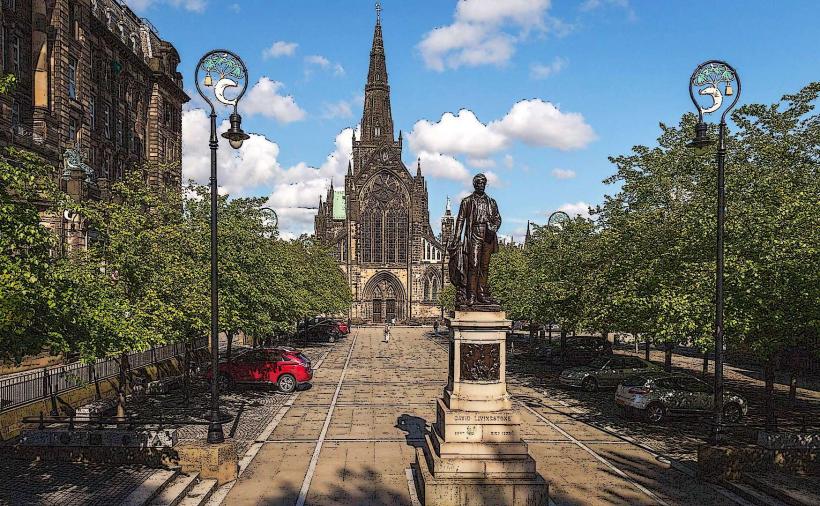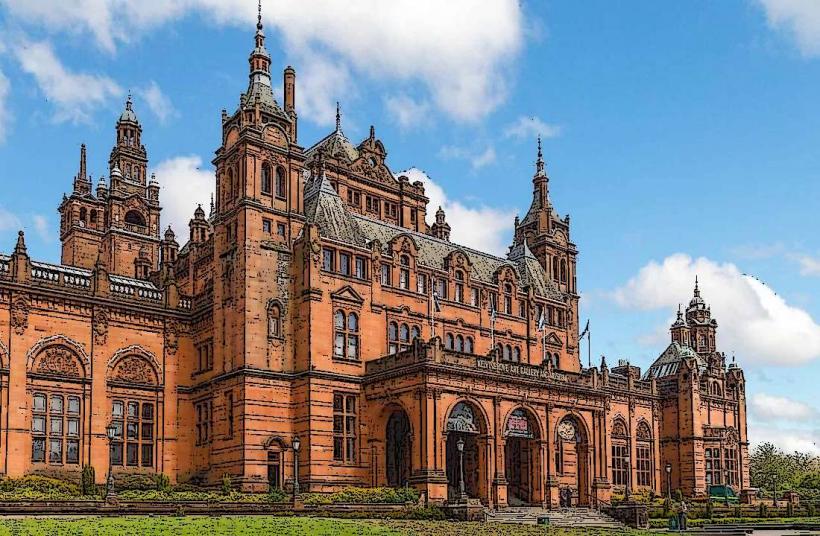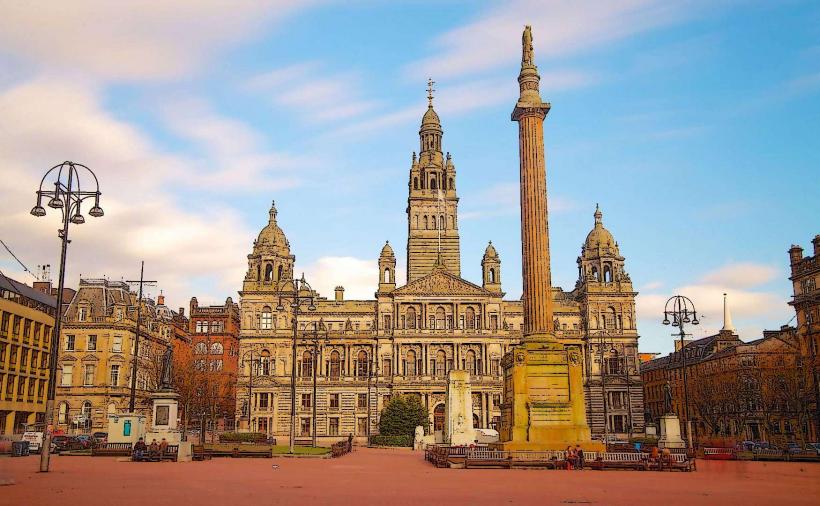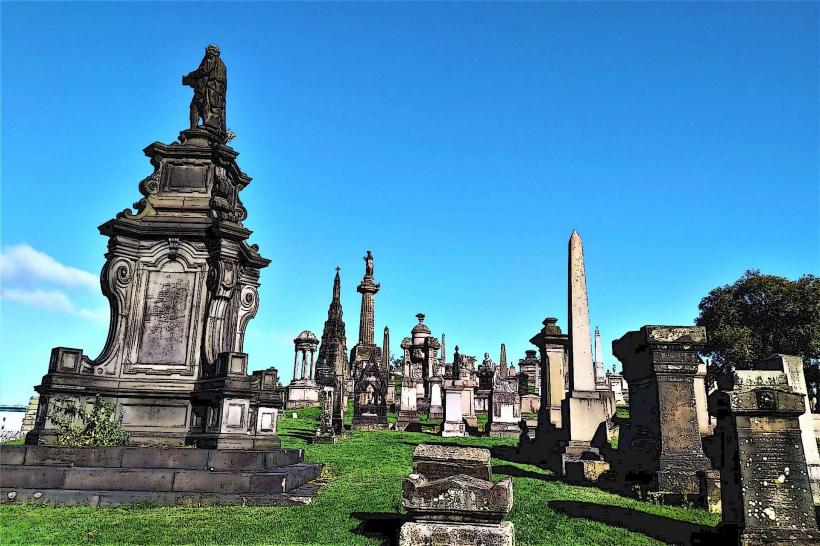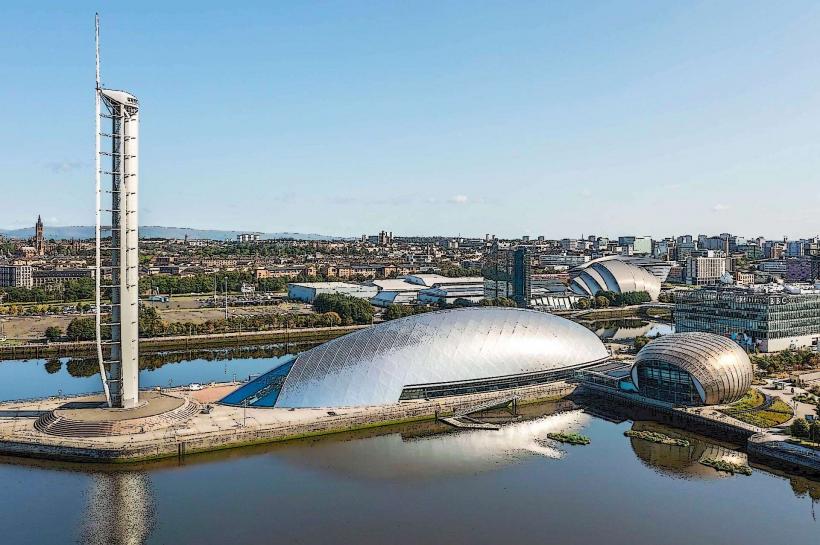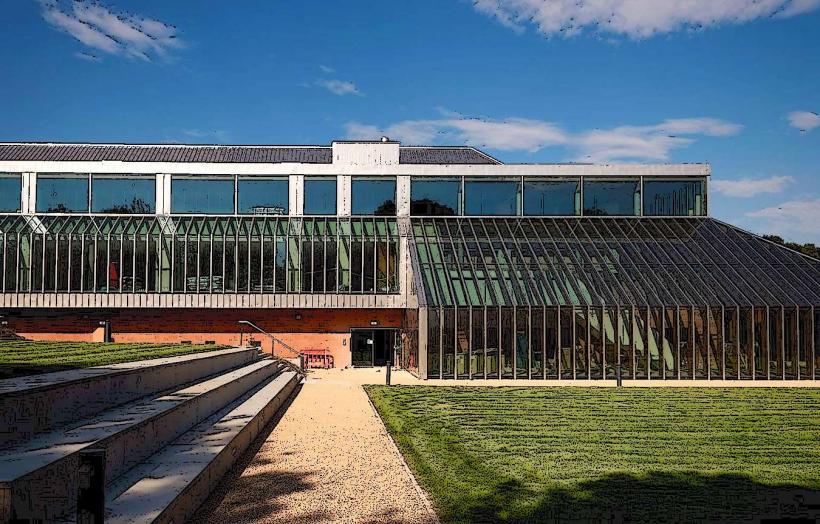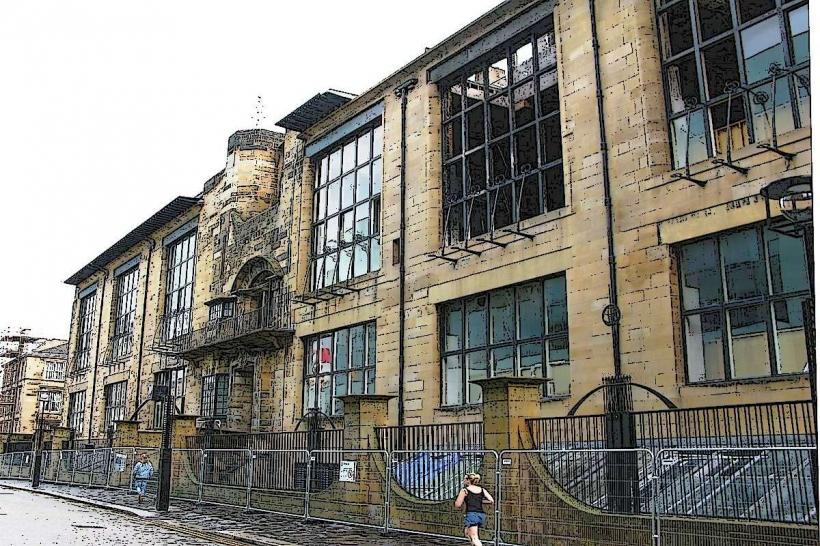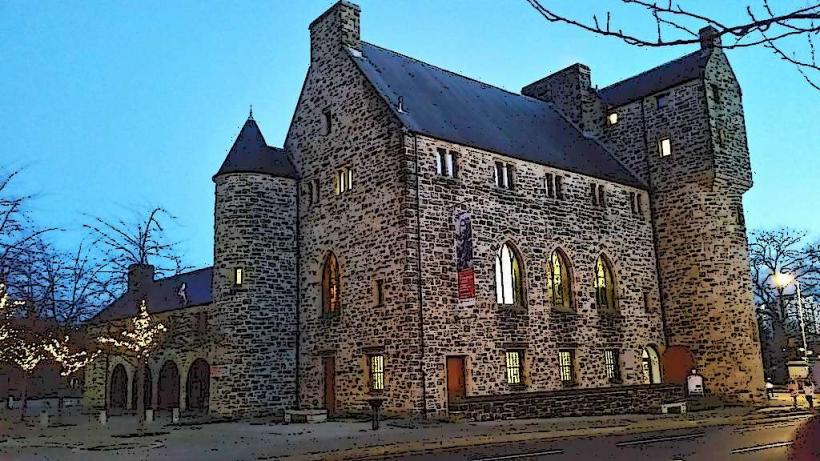Information
Landmark: Riverside MuseumCity: Glasgow
Country: United Kingdom
Continent: Europe
The Riverside Museum is one of Glasgow's most modern and dynamic museums, dedicated to the city’s rich history of transportation, innovation, and social development. Situated on the banks of the River Clyde and designed by renowned architect Zaha Hadid, the museum is an architectural marvel and a must-visit for anyone interested in Glasgow’s industrial heritage, as well as the evolution of travel and transport technologies. Here is a detailed overview of the Riverside Museum, including its history, architecture, collections, and visitor experience.
History and Origins
Founding and Purpose:
- The Riverside Museum opened in 2011 and was built to house the collections of Glasgow’s Transport Museum, which had been located at the nearby Kelvingrove for several decades. The museum was designed to showcase the city's industrial past, particularly its role in the shipbuilding, railway, and automotive industries, as well as to tell the broader story of how transportation has shaped Glasgow and the wider world.
- The Riverside Museum is operated by Glasgow Museums, which oversees a number of major cultural institutions across the city.
Relocation and New Vision:
- In 2003, Glasgow’s Transport Museum, which was founded in the 1960s, closed its original location and planned a new, larger home to display its growing collection. This led to the creation of the Riverside Museum. The museum was part of a wider regeneration of the Clyde waterfront area, which saw the development of new cultural and recreational spaces along the river, with the aim of revitalizing this historically significant part of the city.
- The museum's creation coincided with a broader cultural revival in Glasgow, which was named the European Capital of Culture in 1990, marking the beginning of a long-term investment in cultural and architectural development.
Architecture
Design by Zaha Hadid:
- The Riverside Museum was designed by the world-famous Zaha Hadid Architects, known for their innovative and futuristic designs. The building is a striking example of neo-futuristic architecture, with curving forms, dynamic angles, and an appearance that contrasts sharply with the surrounding more traditional buildings in Glasgow.
- The museum’s building is notable for its sharp, sloping roof, which curves and twists to create a striking, fluid silhouette. The roof itself resembles the shape of a ship's hull, reflecting Glasgow's history as a center for shipbuilding. The exterior is clad in zinc, giving the museum a sleek, contemporary look that gleams in the changing light.
- The building features large glass windows that allow natural light to flood the interior, and the design embraces open-plan exhibition spaces, which enhance the flow of the museum's displays. The space is highly flexible, allowing for exhibitions of various sizes and formats to be showcased.
Interior Layout:
- Inside, the Riverside Museum is airy and spacious, with wide galleries that allow visitors to move freely between exhibits. The open-plan design ensures a fluid and continuous exploration of the museum’s many collections, while interactive displays, multimedia elements, and hands-on exhibits engage visitors of all ages.
- The central hall is dominated by a large, suspended exhibition space, where visitors can see classic vehicles, including trains, cars, and bicycles, in a unique and visually stunning way. The use of high ceilings and a flowing, dynamic layout encourages a sense of movement throughout the museum.
Location and Setting:
- Situated on the Clyde waterfront, the museum enjoys stunning views over the river and is part of the Glasgow Harbour district, which is undergoing continuous redevelopment. Visitors can explore the nearby Glasgow Science Centre, Clyde Arc Bridge, and the Glasgow Tower, as well as take a stroll along the riverbanks. The Riverside Museum is well connected to the city center and is easily accessible by public transport, including buses, trains, and the Glasgow Subway.
Collections and Exhibits
The Riverside Museum houses an impressive and diverse collection of over 3,000 objects, showcasing the history of transport and Glasgow’s industrial evolution. The museum’s collections cover a wide range of vehicles, modes of transportation, and historical artifacts, as well as stories about the people who lived, worked, and traveled in Glasgow.
Transport and Vehicles:
- The museum’s core collection consists of a vast array of historic vehicles, including cars, bikes, motorcycles, trains, and ship models. The collection reflects Glasgow's role as a hub for industrial design, engineering, and manufacturing.
- Classic Cars: The Riverside Museum features a large collection of classic cars, ranging from early motor vehicles to mid-20th-century models. Visitors can see iconic vehicles from Ford, Chevrolet, and Rolls Royce, alongside historic fire engines, buses, and trolleybuses that once served Glasgow.
- Trains and Locomotives: One of the major highlights of the museum is its collection of historic railway locomotives. The museum showcases trains from different periods of history, including an original steam locomotive, as well as a cattle truck and carriages that tell the story of Glasgow’s importance in the development of the British railway system.
- Ships: Reflecting Glasgow’s long history of shipbuilding, the museum includes displays related to ship models and nautical history. Glasgow was once home to some of the world’s largest and most advanced shipyards, and the Riverside Museum celebrates this heritage with models of famous ships and interactive exhibits.
Social History and Everyday Life:
- In addition to its focus on transportation, the museum offers a window into the everyday life of Glaswegians across the decades. The museum features a collection of street scenes from the past, including a recreated Victorian street and traditional Glasgow shops, where visitors can learn about the city’s rich social history.
- Vintage Posters and Advertisements: The museum includes displays of historic advertising and posters that highlight the evolution of transport-related marketing over the years, providing insight into how different modes of transport were promoted and how travel culture evolved.
Interactive and Multimedia Exhibits:
- Riverside Museum embraces modern technology to enhance the visitor experience. Interactive exhibits, touchscreens, and virtual reality displays allow visitors to explore the history of transportation in a dynamic and engaging way.
- There are also hands-on activities, such as the opportunity to sit in historic vehicles like a Glasgow tram, or interact with displays about the design and evolution of various modes of transport. Children can enjoy playing with miniature trains or participating in craft workshops related to transport history.
Glasgow's Industrial Past:
- The museum’s collection also includes artifacts from Glasgow's industrial revolution and the shipbuilding era. Visitors can learn about the city’s history as a powerhouse of manufacturing and the social and economic changes brought about by industrialization. Artifacts from Glasgow's shipyards, including tools, blueprints, and machinery, offer insight into the scale and impact of this industry.
Special Exhibitions and Programs
Temporary Exhibitions:
- The Riverside Museum regularly hosts temporary exhibitions focused on various aspects of transportation, engineering, and social history. These exhibitions change regularly, providing fresh and exciting opportunities for visitors to explore new themes.
- Past exhibitions have covered subjects such as railway history, aviation, cycling, and even pop culture related to transport, like James Bond’s cars or exhibits focusing on the Golden Age of Travel.
Educational Programs and Events:
- The museum offers a range of educational programs for school groups, families, and adults. These include guided tours, workshops, and special events, often related to historical themes, engineering, or transport design.
- The museum also organizes family-friendly events throughout the year, including craft sessions, storytelling, and even vintage transport days where visitors can see classic vehicles in action.
Museum Shop and Café:
- The Riverside Museum has a shop that offers a wide range of books, models, gifts, and souvenirs related to the museum’s collections. Visitors can take home a piece of the museum’s history, whether it’s a model of a classic car or a historic railway print.
- The café located within the museum offers light refreshments, snacks, and drinks, allowing visitors to relax and enjoy the beautiful views over the River Clyde.
Visitor Experience
Admission and Accessibility:
- Admission to the Riverside Museum is free, although donations are welcomed to support its operations. The museum is fully accessible to visitors with disabilities, with ramps, lifts, and appropriate signage to ensure everyone can enjoy the exhibitions.
Location and Opening Hours:
- The Riverside Museum is located along the River Clyde in Glasgow, easily accessible by public transport, including buses and the Glasgow Subway. It is open daily with extended hours during certain times of the year. It is closed on some public holidays, so it’s a good idea to check in advance.
Conclusion
The Riverside Museum is a unique and visually stunning museum that tells the story of transportation, innovation, and Glasgow’s industrial past. Its striking design, rich collections, and interactive exhibits make it a fascinating destination for visitors of all ages. Whether you're interested in classic cars, railway history, or the development of modern transport, the Riverside Museum offers an immersive and educational experience that celebrates the legacy of Glasgow as a city at the heart of industrialization and technological advancement.

